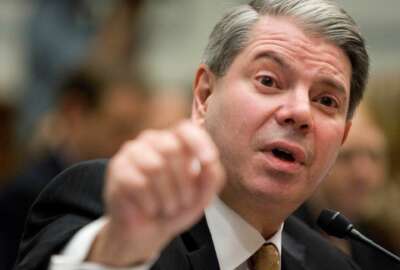

A lack of permanent leadership at the Veterans Affairs Department compounding many longstanding challenges at the agency, including a path forward for the VA Choice...
Funding for the Veterans Choice Program will run dry by mid-June, the Veterans Affairs Department informed Congress last week.
The future of the Choice program is yet another big unknown for the department — and more importantly the veterans it serves — amid controversial leadership changes and lingering questions about VA’s electronic health record modernization.
In an April 26 letter to House and Senate VA Committee leadership, acting Secretary Robert Wilkie encouraged Congress to find a long-term solution to the funding shortfall rather than another temporary fix.
“It is the administration’s preference that VCP be addressed holistically with reform legislation and that all community care programs, including VCP, be consolidated and funded via discretionary resources,” Wilkie wrote. “Continuing to apply funding ‘Band-Aids’ only prolongs the transition to a more efficient and effective program for our veterans.”
VA has struggled to predict when exactly it would exhaust funds for the Choice program, and Congress and the administration have failed to agree on a long-term solution. Lawmakers in both chambers spent much of 2017 working on legislation, but members haven’t been able to agree on how to pay for the program and punted the issue to this year.
But Congress has largely been silent on the Choice program since internal conflicts between White House staff and former VA Secretary David Shulkin took center stage earlier this year. Shulkin said he clashed with the White House’s vision for the Choice program and cited those disagreements as the reason for his removal.
Finding a path forward for the VA Choice Program is among the near-term priorities the department recently described last week in a statement.
According to VA Spokesman Curt Cashour, operations at the department have improved in many ways now that new leadership is aligned with President Donald Trump and his priorities and are “restor[ing] regular order.”
“Under acting Secretary Wilkie’s leadership, senior VA officials are now on the same page, speaking with one voice to veterans, employees and outside stakeholders, such as Congress and veterans service organizations, and are focused on a number of key priorities in the short term,” he said last Wednesday in a statement.
Among VA’s other priorities were finalizing a decision on the department’s electronic health record modernization and working with the White House to confirm Rear Adm. Ronny Jackson as secretary.
Jackson, however, withdrew his nomination the following day.
Meanwhile, the lack of permanent VA leadership has at least one top leader in the federal oversight community concerned.
“They need leadership,” Comptroller General Gene Dodaro said of VA at a House Oversight and Government Reform Committee hearing last week. “I’m very worried about the Veterans [Affairs Department]. They have some of the most entrenched management problems in the federal government, that’s why we put them on the high-risk list. They’re making efforts to come up with a plan now, but it’s been three years since we put them on the list. They really haven’t finalized a good plan to come off the list. We’re working with them, they’re making progress. I don’t want to say that they’re not. But there needs to be more urgency to deal with the problems over there.”
Dodaro also mentioned vacancies at other top positions throughout the department. VA still lacks a permanent chief information officer and an undersecretary for health. The Veterans Benefits Administration finally gained its first permanent leader in nearly three years with Paul Lawrence, whom the Senate confirmed last week.
Copyright © 2025 Federal News Network. All rights reserved. This website is not intended for users located within the European Economic Area.
Nicole Ogrysko is a reporter for Federal News Network focusing on the federal workforce and federal pay and benefits.
Follow @nogryskoWFED


